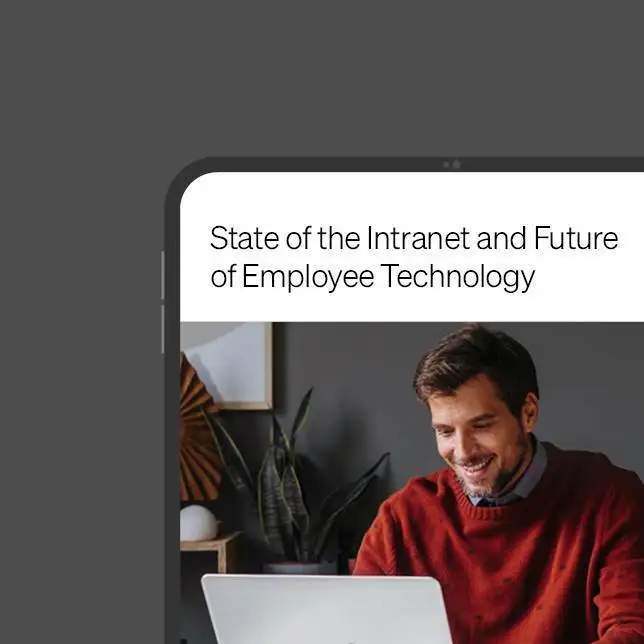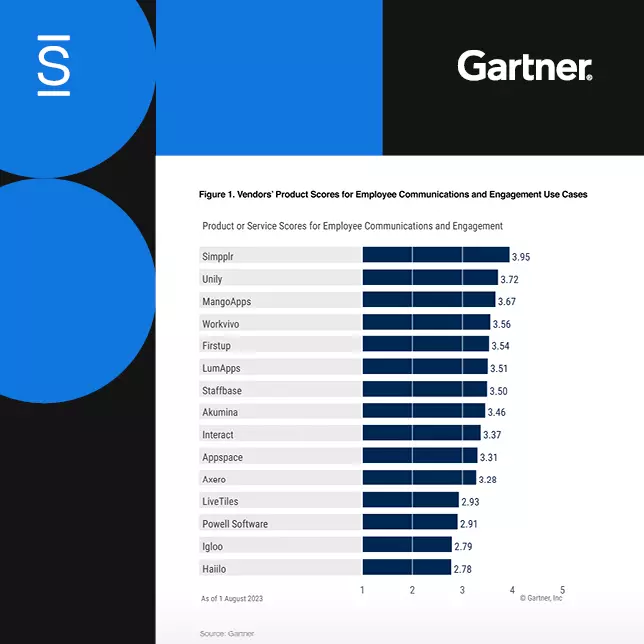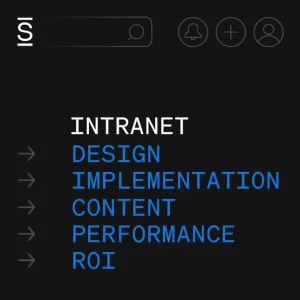Improving employee experience sounds simple, and we make it feel like an intuitive process, but most companies struggle to create a workplace where everyone can flourish. And in today’s society, more and more workers are looking for a company that values and places EX first.

What is employee experience and why does it matter?
If you want to attract top talent, it’s imperative that you create an amazing experience for every employee. But what is this exactly? Employee experience is the way in which your employees experience your organization—the way they talk about you to friends and family and the way they feel when they come into the office or login to work for you each day.
And if you inspire and improve employee engagement to pursue greatness—in work and in life—your employees will be happier, and in turn work harder, when your employee experience is on point.
It starts with humanizing your employee experience, and seeing your employees as people with lives, individual talents, and feelings. And when you adjust your approach accordingly and engage employees, while recognizing their talents and abilities, together the company and the employees simply flourishTM.
But don’t take our word for it, there are stats to support this thinking:
- In our study on Internal Communications and the Great Resignation, internal communicators rated “shifting attitudes about work/life balance” and increased competitiveness in the labor market” as the top two drivers of attrition.
- When you engage employees, you boost performance, with top “performers adding up to 48% more value” to their company.
- McKinsey shares that “employees expect their jobs to bring a significant sense of purpose to their lives. Employers need to help meet this need or be prepared to lose talent to companies that will.”
And accomplishing the above comes down to finding ways to improve employee experience.
The employee experience has to be humanized. An AI-powered intranet can assist organizations by providing real-time insights, from both solicited and passive feedback. And this not only creates your company culture, but also makes employees feel heard and motivated to perform.
Strategies to improve employee experience
2020 redesigned the workplace and saw the expansion of remote work and deskless employees. And brands are recognizing the need to build an energized employee culture and keep employees unified and engaged as they continue to spread out. This can be a challenge. When they don’t come into the office every day or they have limited time with their co-workers face-to-face, the sense of cohesion and employee experience suffers.
However, when an AI-powered intranet combines with an employee-centric workspace, leadership can engage employees by focusing on acquainting workers. And one way to achieve this is by creating a dynamic org chart.
This chart helps employees connect names to faces using an interactive capability populated with robust employee profiles. This is especially helpful when someone is new to the organization. Remembering which names belong to which faces can feel overwhelming. And that’s one thing an employee shouldn’t have to stress about.
It also helps employees connect with the right person for a specific purpose or project. Employees don’t have to wonder who they need to talk to, the chart points them in the right direction and creates an easy way to connect.
And then a virtual headquarters needs a virtual watercooler, which can be created using a variety of interest-based communities or a hub where birthdays, events and anniversaries are shared and celebrated. A company that works to improve employee experience, will want to recognize and celebrate with employees as well, so having executives drop in and engage is always a plus.
Fostering relationships is a must, and companies should be able to attack this challenge from multiple angles. When employees feel heard and connected, they’re quicker to align on business goals as a collaborative team and it needs to happen whether one is logging in from their home office, or on the road via a mobile app.

All of this combined creates a community and gives your company culture superpowers!
But you need to understand the sentiment to ensure your efforts are hitting the mark.
Eliciting, understanding and responding to workplace sentiment
Employees aren’t robots. They have feelings and ideas on how things should go. Sadly, many times, workplace culture doesn’t allow for these opinions to be seen, let alone heard. And companies suffer because of it. In fact, LinkedIn reports that employees quit due to poor communication.
One of the best ways to improve employee experience is by fostering a culture that values communication, and ensures employees actually feel valued. That last part is where many companies drop off, as employees just aren’t feeling the love. Monitoring sentiment is one of the first steps. And it can be done simply with Employee Listening.
Employees often feel shy, or hesitant to offer real feedback as they don’t trust their employer’s reactions to it. They’re afraid it will be used against them in some way. With Employee Listening, employees can give real-time, anonymous feedback on announcements, policy changes, and events. And this capability is powerful.

Sometimes a policy change may seem like a great idea until it affects the backbone of your workforce. Those who are impacted by it daily may have some helpful insights on how to better implement it or adjust it for the betterment of a cohesive culture. And if you provide a space where they feel safe to share without risk of punishment, you can elicit important insight while also enhancing their perception of you as an employer.

And it doesn’t have to stop there. People analytics is another way to illustrate your engagement with your employee experience.
Having people analytics, or prescriptive analytics, provides real-time insights that help you understand your employees. This improves employee experience and gives you data on:
- Trending topics: This helps you understand the features and channels that are driving employees to your content as well as how employees and departments connect with that content within your intranet.
- Emotions and sentiments: As we’ve pointed out, understanding how employees feel and what support they’re missing is critical to your EX. Using AI-backed sentiment analysis, you’re able to see what’s affecting employees positively, and what’s adding frustration. You can then adjust accordingly.
- User connections: Understand how employees on teams are interacting with one another. Instantly identify gaps and provide any missing intel the users may need. This is particularly helpful in assisting organizations in managing remote teams.
All of this can be utilized to understand what makes your employees and teams tick.
And perhaps, gluing all of this together is a personalized experience, where employees have exactly what they need, when they need it.
Company culture that helps employees move with confidence
As an employee, having an intranet that provides personalized content which keeps them informed and engaged from day one is important. And this is especially true when it comes to new employee onboarding experiences.
There’s a lot to remember when starting a new job, and sometimes after the first week or two, an employee feels left on their own to sink or swim. This is not a good look for any company, and it can make a lasting impression.
With personalization however, your employee will have the data they need to succeed at their fingertips. The secret to this is personalized content discovery. Files, articles, and any intel that is specific to your employee’s role, location and interests are quickly found in their dashboard. They don’t have to wade through piles of irrelevant data to find what they need with results powered by smart search.
And this AI shifts along with them, as their needs and abilities in the workplace transform. It eliminates anything that’s no longer relevant to them and replaces it with fresh insight, enhancing confidence and increasing their knowledge base, which is a path toward encouraging new skill and career development and growth. This makes your workers feel special by showing that you care to help them learn more and advance in your company.
The strength of your employee experience strategy is an important piece of a cohesive company culture—and it’s something every company needs. Be sure to reach out for a demo and discover a number of exceptional ways to improve employee experience!

















